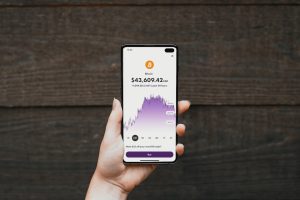Exploring the Role of Technology in the Online Forex Market
The foreign exchange (forex) market is the largest and most liquid financial market in the world, with an average daily trading volume of over $6 trillion. Over the past few decades, technology has played a crucial role in shaping and revolutionizing the forex market. From the advent of electronic trading platforms to the rise of algorithmic trading, technology has significantly enhanced the efficiency, accessibility, and transparency of the forex market.
One of the most significant technological advancements in the online forex market is the development of electronic trading platforms. In the early days, forex trading was primarily conducted through telephone or face-to-face interactions. However, with the introduction of electronic trading platforms, traders gained access to real-time market data, instant trade execution, and a wide range of trading tools and indicators.
These platforms allow traders to monitor multiple currency pairs simultaneously, analyze charts and patterns, and execute trades with a single click. They also provide access to historical data, economic news releases, and customizable trading strategies. This increased accessibility and convenience have attracted a larger number of individual traders to participate in the forex market.
Moreover, technology has facilitated the globalization of the forex market by enabling traders from different parts of the world to trade seamlessly. With the internet and online trading platforms, traders can now access the forex market 24 hours a day, five days a week, regardless of their geographical location. This has led to increased market liquidity and a larger number of trading opportunities.
Another significant technological advancement in the online forex market is the rise of algorithmic trading, also known as automated trading or trading robots. Algorithmic trading involves the use of computer programs to execute trades based on predefined rules and algorithms. These programs can analyze vast amounts of market data, identify trading signals, and execute trades with high speed and precision.
Algorithmic trading has revolutionized the forex market by eliminating human emotions and biases from trading decisions. It allows traders to backtest and optimize their trading strategies, ensuring consistent and disciplined trading. Algorithmic trading also facilitates high-frequency trading, where trades are executed within milliseconds, taking advantage of small price discrepancies in the market.
Furthermore, technology has enhanced the transparency and fairness of the forex market through the implementation of electronic communication networks (ECNs) and straight-through processing (STP). ECNs connect traders directly with liquidity providers, such as banks and financial institutions, ensuring competitive and transparent pricing. STP technology enables seamless and efficient trade execution without the need for manual intervention or dealing desks.
These technological advancements have not only benefited individual traders but also institutional investors and forex brokers. Institutional investors can access deep liquidity and execute large trades without causing significant price movements. Forex brokers can offer competitive spreads, low transaction costs, and advanced trading tools, attracting a larger client base.
However, it is essential to note that with the increasing reliance on technology in the forex market, there are also potential risks and challenges. Technical glitches, connectivity issues, and cyber threats can disrupt trading operations and compromise the integrity of the market. Therefore, it is crucial for traders and market participants to have robust risk management systems and backup plans in place.
In conclusion, technology has played a pivotal role in the evolution of the online forex market. Electronic trading platforms, algorithmic trading, and advanced order execution technologies have enhanced the accessibility, efficiency, and transparency of the market. These advancements have attracted a larger number of individual traders, facilitated global participation, and provided new trading opportunities. However, it is essential to remain vigilant and adapt to the changing technological landscape to mitigate potential risks and challenges.






